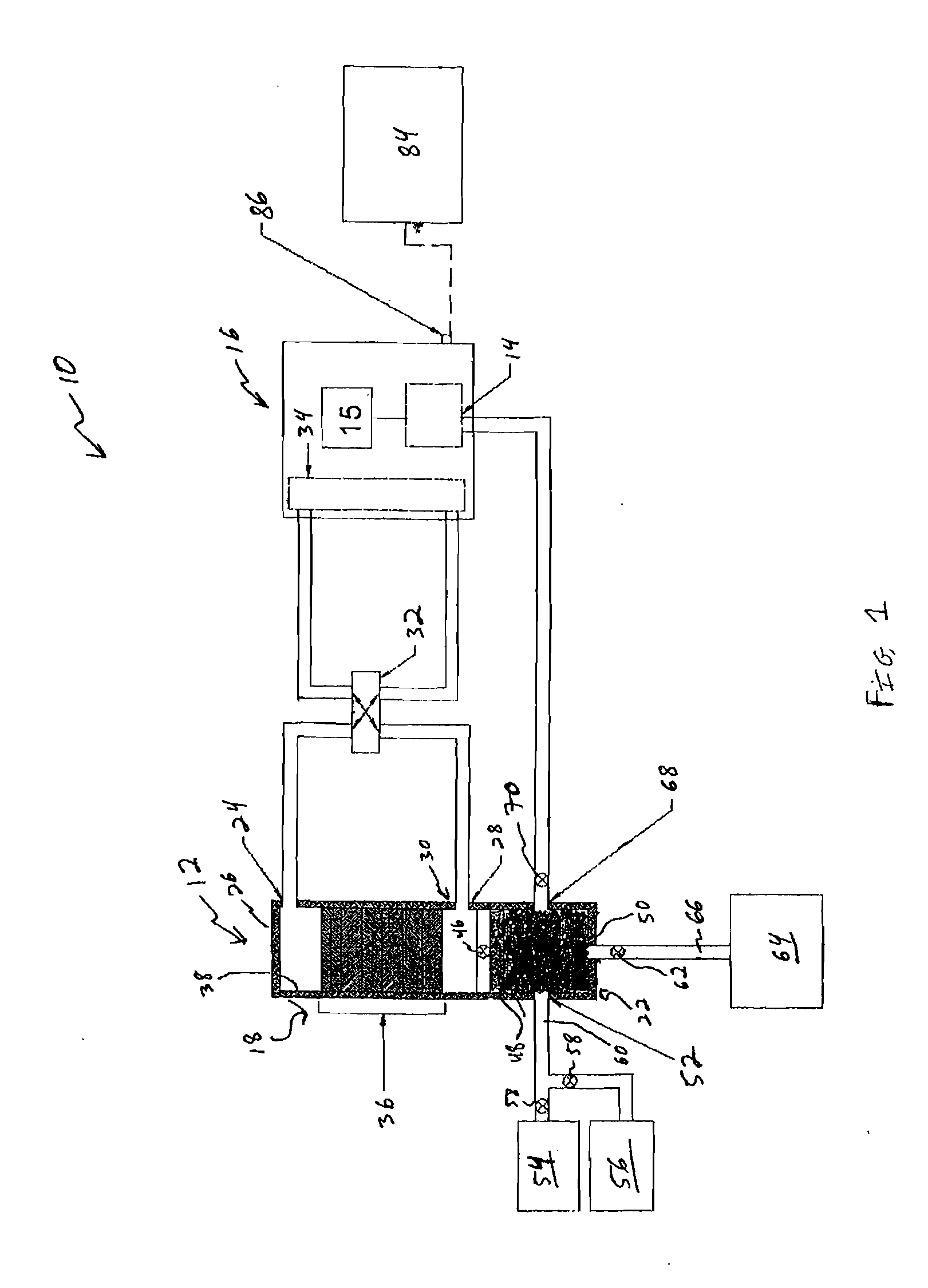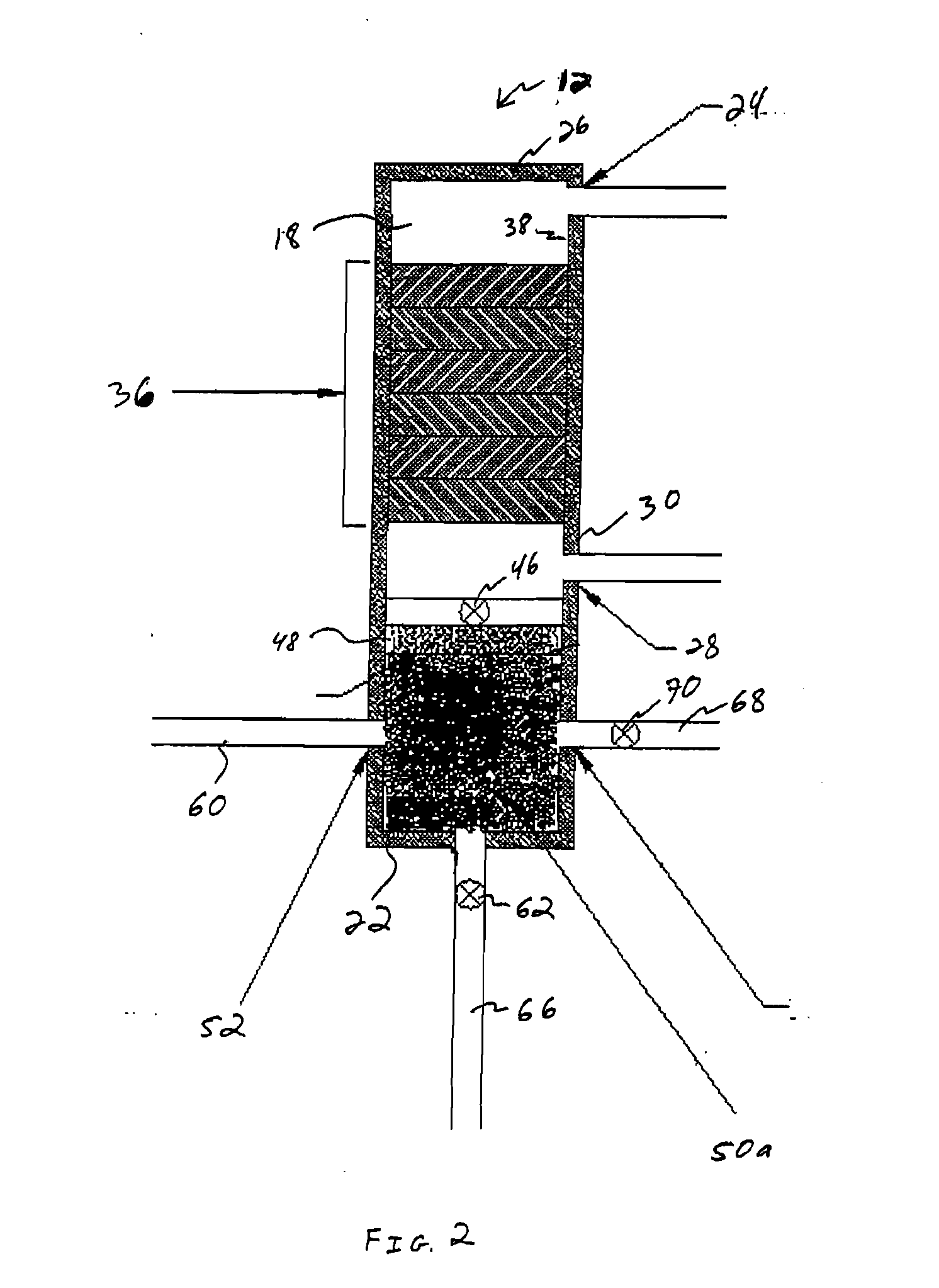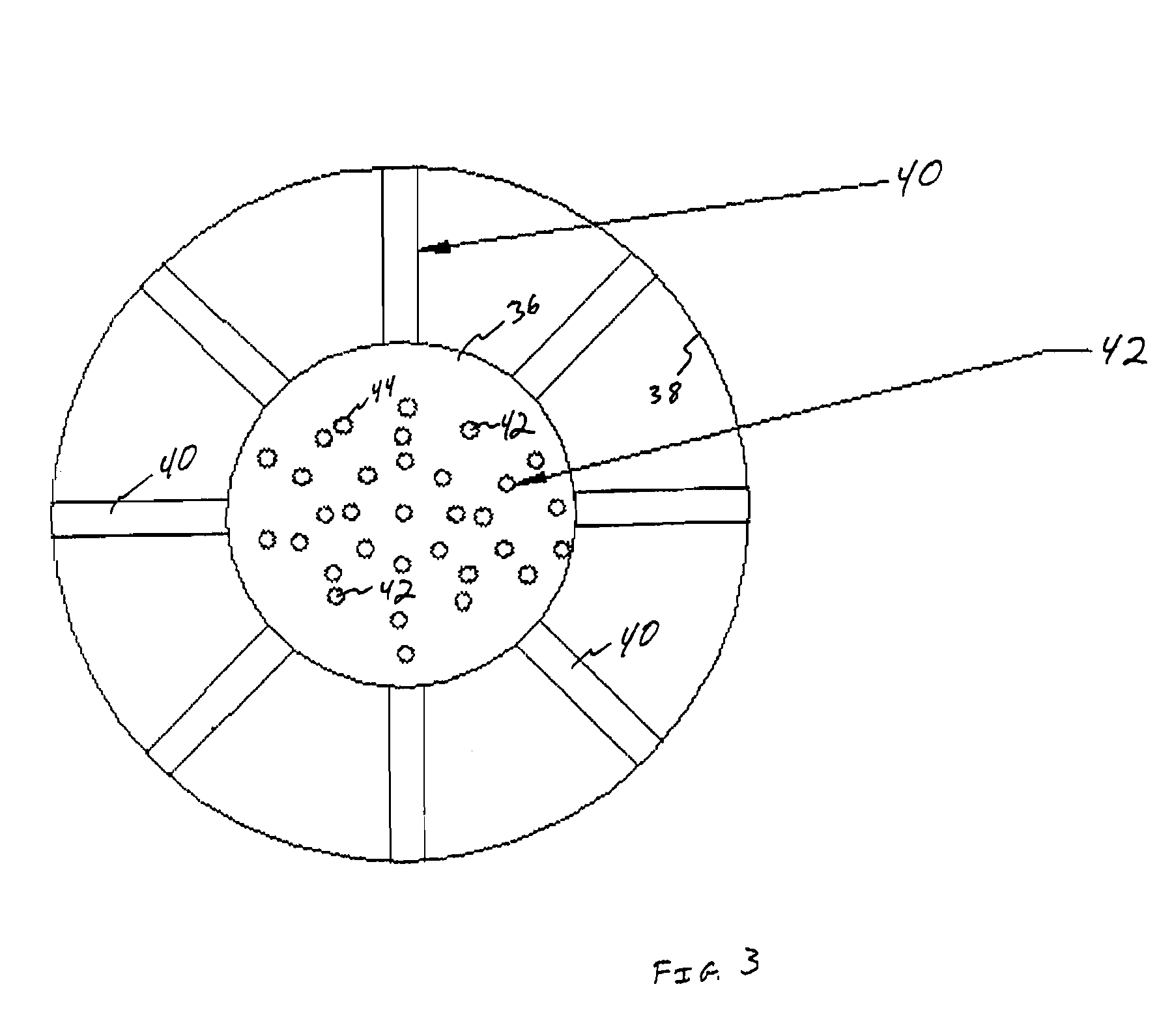Portable microorganism detection unit
a microorganism and detection device technology, applied in the field of microorganism detection devices, can solve the problems of affecting the economic and social benefits of food related businesses, affecting the detection efficiency of food products, and contaminated food products intentionally or unintentionally, so as to facilitate sample mincing, reduce the pore size, and increase the detection efficiency
- Summary
- Abstract
- Description
- Claims
- Application Information
AI Technical Summary
Benefits of technology
Problems solved by technology
Method used
Image
Examples
Embodiment Construction
[0020]The following description of the preferred embodiment(s) is merely exemplary in nature and is in no way intended to limit the invention, its application, or uses.
[0021]The present invention, as shown in FIGS. 1-7 is a portable device 10 for detecting microorganisms in a food sample. Specifically, in the exemplary embodiment, the device 10 is configured to detect plant and food pathogens and bioterrorism molecules in seeds, crops, and other food products. For example, the device 10 may be configured to detect pathogens such as soybean rust, wheat scab, corn ear rot, Salmonella, Listeria, Escherichia coli, and / or bioterrorism threats such as anthrax, bubonic plague, and / or yellow fever that are contained in food products such as meat, bottled water, fresh vegetables, dairy, seafood, and grains. The device 10 is portable so that the detection can take place at a point-of-use or, more specifically, at the location where the food is grown and / or produced. Accordingly, the food samp...
PUM
| Property | Measurement | Unit |
|---|---|---|
| temperature | aaaaa | aaaaa |
| pore size | aaaaa | aaaaa |
| pressure | aaaaa | aaaaa |
Abstract
Description
Claims
Application Information
 Login to View More
Login to View More - R&D
- Intellectual Property
- Life Sciences
- Materials
- Tech Scout
- Unparalleled Data Quality
- Higher Quality Content
- 60% Fewer Hallucinations
Browse by: Latest US Patents, China's latest patents, Technical Efficacy Thesaurus, Application Domain, Technology Topic, Popular Technical Reports.
© 2025 PatSnap. All rights reserved.Legal|Privacy policy|Modern Slavery Act Transparency Statement|Sitemap|About US| Contact US: help@patsnap.com



